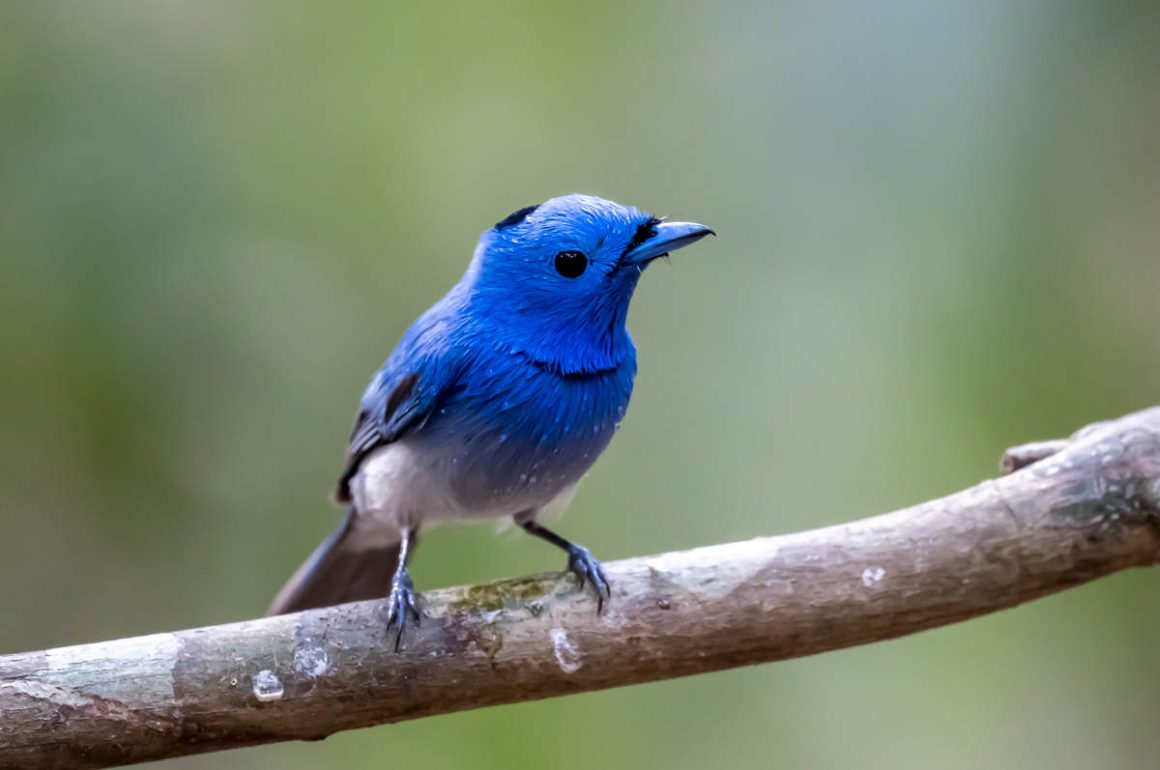
In this second post on the birds of Tan Phu Forest, let’s get the bulbuls out of the way first. Three seem to be particularly common here.
The Ochraceous Bulbul looks similar to the Puff-throated Bulbul, with which it shares a genus – the similarity made one of my travel companions doubt the whole framework of species distinctions.
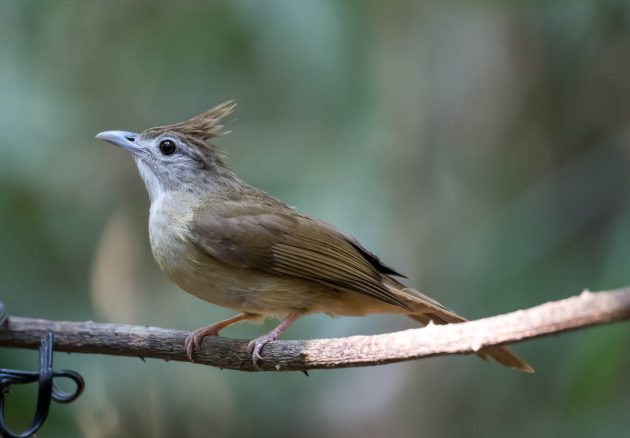
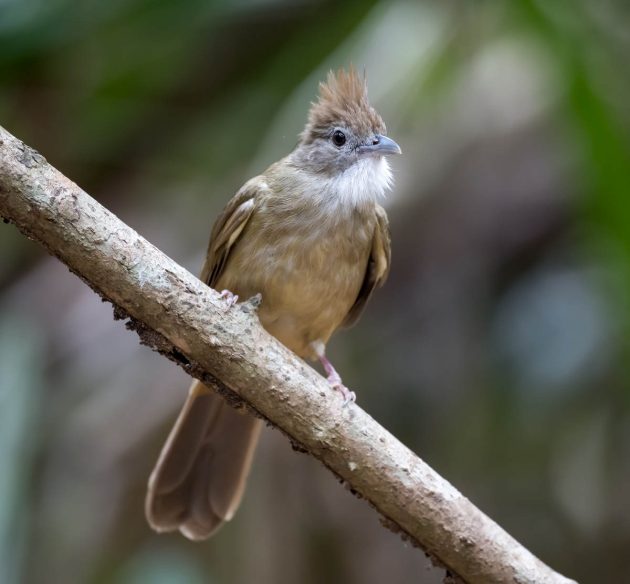
Even for a bulbul, it is a “bulky, very noisy, conspicuous” bird (HBW).
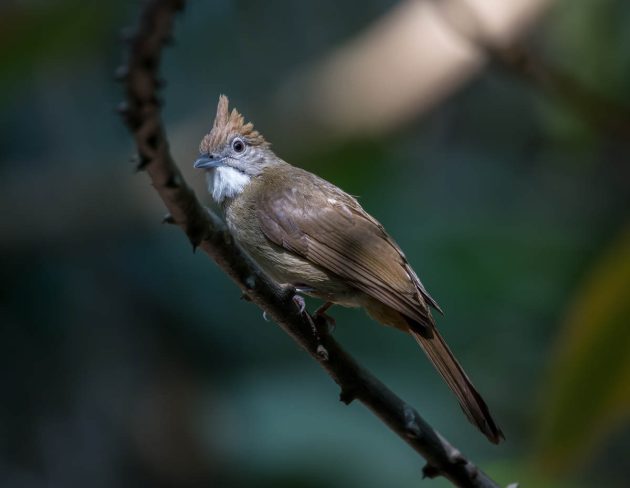
The HBW also indicates that these bulbuls can be hooligans: “Associates in loose noisy parties of 4–8 individuals … often aggressively displaces smaller bulbuls”.
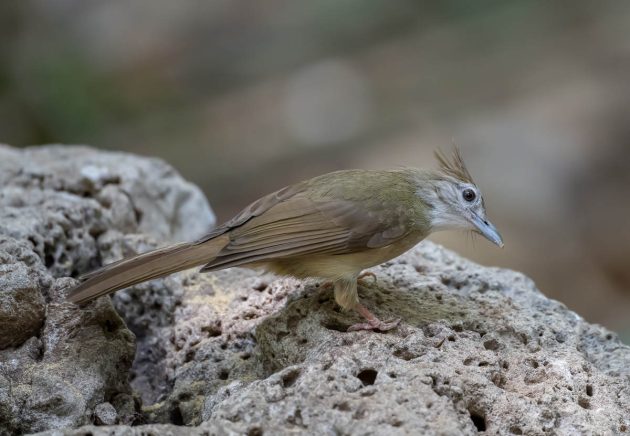
Presumably this includes the Grey-eyed Bulbul, a much lighter bird also often seen at Tan Phu.
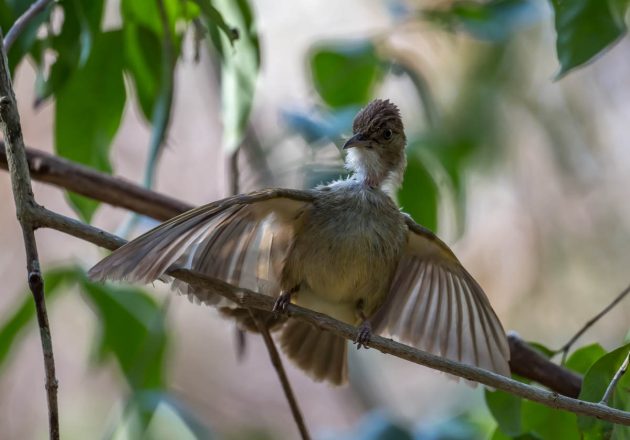
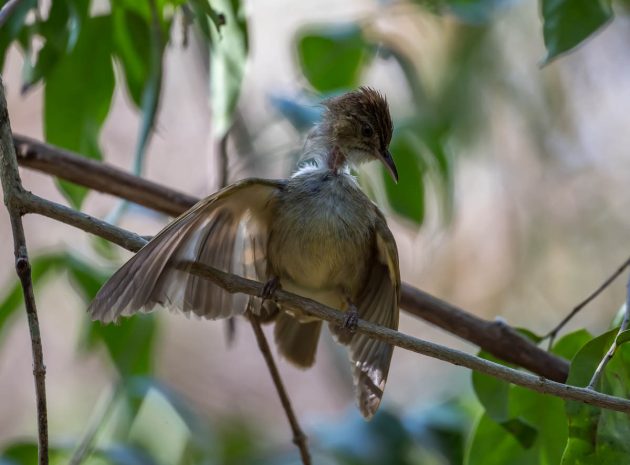
Not a particularly progressive bird – according to one paper primarily looking at molt, only female Grey-eyed Bulbuls build the nest and incubate, while the males do typical male things such as bringing food and defending the nest.
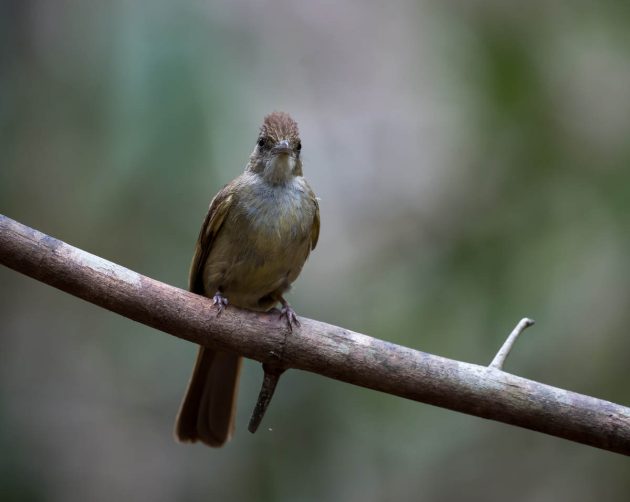
This traditional lifestyle fits well with its unexciting species name of propinqua, meaning something like “related, similar, neighboring” – the kind of name unimaginative scientists give to a new species that looks too boring to merit naming it after some famous ornithologist or rich sponsor.
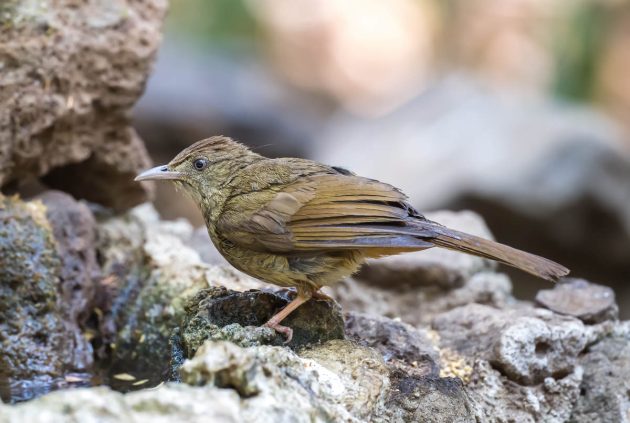
The molt of the Stripe-throated Bulbul is the subject of another paper.
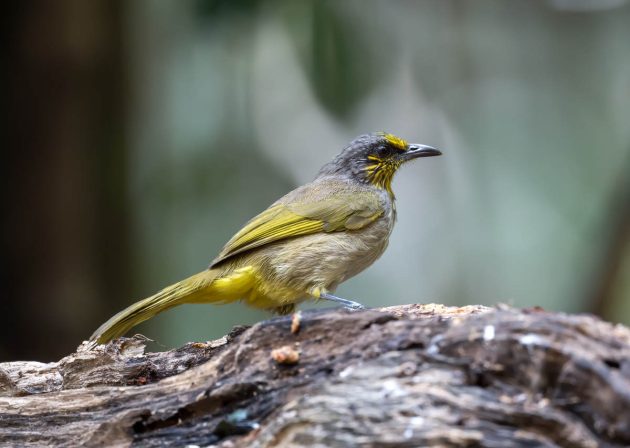
Interestingly, the molt of the males takes about 20 days longer than that of the females – the authors speculate that this is because of the different peak time efforts in breeding, with the males being involved earlier (singing, establishing territory) than the females (incubating, nestling care).
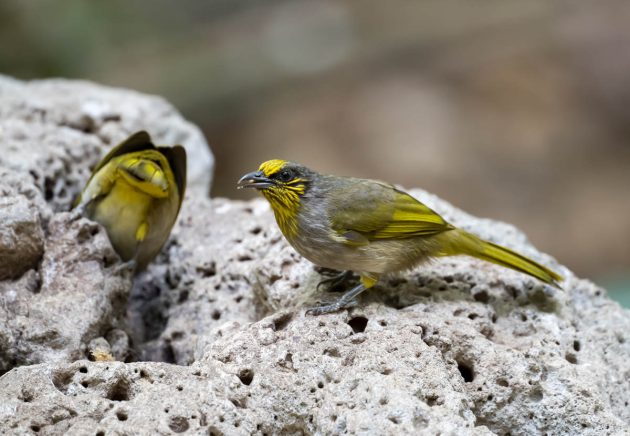
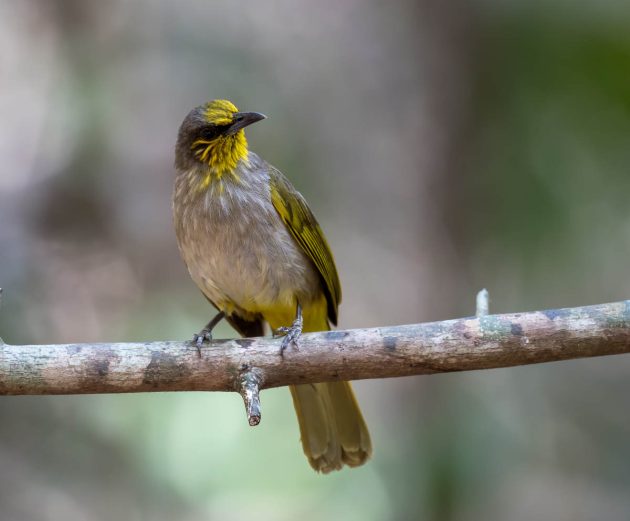
The Streak-eared Bulbul is not a favorite of the influential eBird crowd: a “dull brown bulbul”, not exactly a ringing endorsement. The HBW seems to agree, remarking that the species “has fairly nondescript olive-brown plumage”.
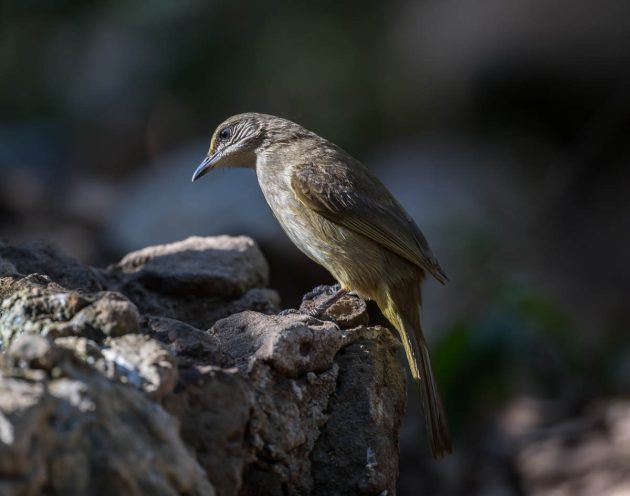
That would certainly make for bitter reading for Capt. Paul Conrad (1836-1885), a German naturalist in the East Indies, after which the species is named (Pycnonotus conradi).
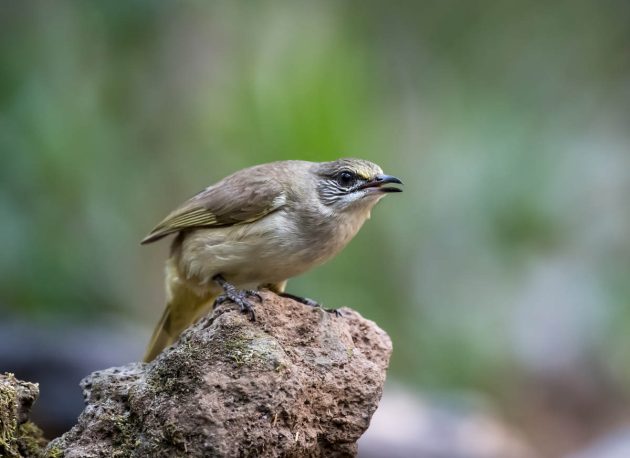
But he might be delighted in finding a paper about the different vocalizations of two geographically distinct populations of the bulbul – even though most of the paper (except for the abstract) is written in Thai and thus beautiful to look at but rather unintelligible to most of us.
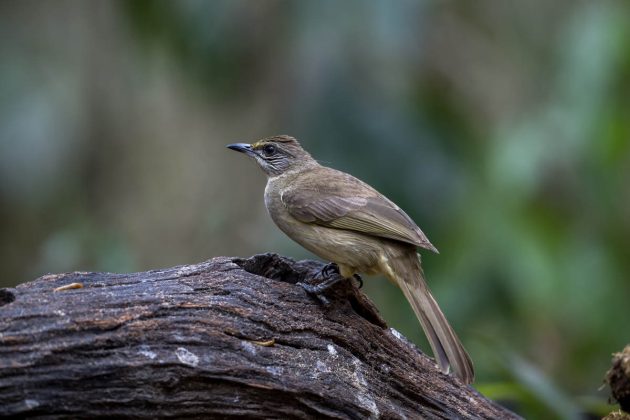
There seems to be almost no information on Paul Conrad except that he used his life to get from Leonberg (where he was born) to Bremen (where he died). “You live your whole life just to travel to the place you?re gonna die” (Craig Finn, “Blankets”).
The Greater Coucal spends most of its life feeling superior to the Lesser Coucal.
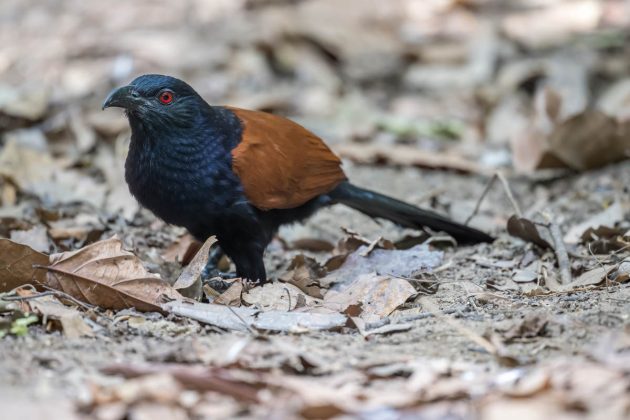
However, this offers no protection against superstition. Greater Coucal body parts are used as traditional medicine by the Malays in Kuok Village in Indonesia (source). Traditional wisdom sometimes is massively overrated.
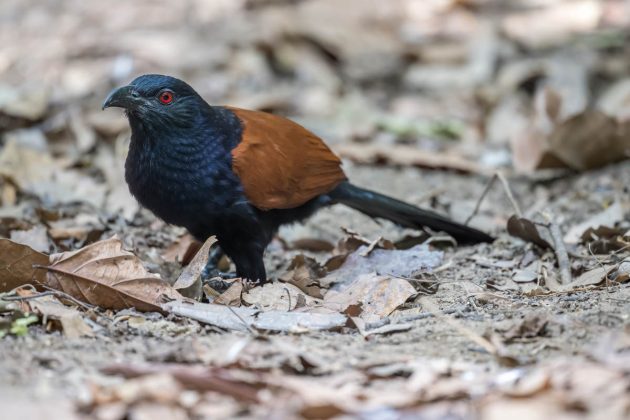
Then again, smaller birds might think of this superstition when reading a paper on a Greater Coucal feeding on a Common Myna.
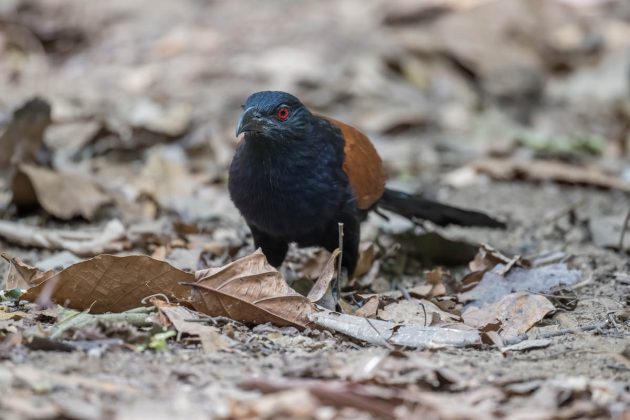
An abstract of a scientific paper reads as follows (unabridged): “External examination of free range abandoned dead Greater Coucal in a veterinary dispensary, Vellore, Tamil Nadu, India revealed presence of a large sized louse in the feathers and was identified as Laemobothrion maximum on the basis of morphology and size of the louse.” However, if you want to read the complete article, the pdf file costs 40 Euros. I am wondering what additional information could possibly be in there. Maybe some background on the color of the veterinary dispensary, or the birthdays of the authors.
Similarly, a story titled “Call of the Greater Coucal” published by Middlebury College Publications is also inaccessible to me, so I cannot comment on its literary or ornithological merit. It starts with the sentence “Noomi wakes up early on Sunday morning because her right ear hurts with a dull, regular pulse.” Not sure if and when the coucal shows up in the story.
One of my cats – when approached by me – typically shows one of the two following reactions – licking me or (play-)biting. Red Jungle Fowl spend their active time also almost exclusively on two things, namely ground pecking (60%) and ground scratching (34%) (source).
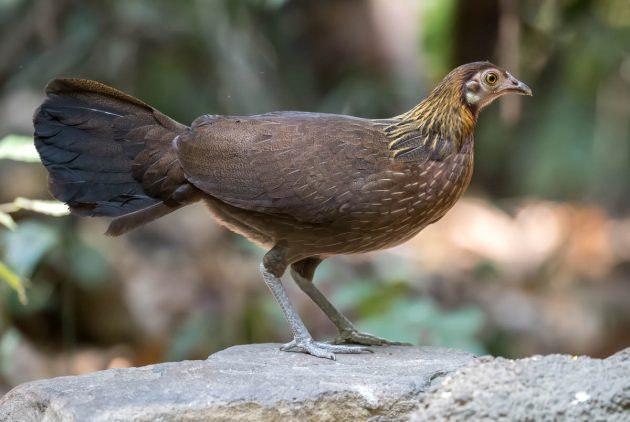
Those Red Jungle Fowl not up to scratch are weeded out by evolution. Only a small number of the most dominant cocks and hens produced most of the adults of succeeding generations. As a result, the genetically effective breeding size of the population was only about 13% of the number of adult birds. While this sounds bad, the authors of this study claim it may be a positive factor in adaptive evolution (basically, the inferior birds don’t get to breed much). If you think this sounds very Darwinian, then that is because it is Darwinian.
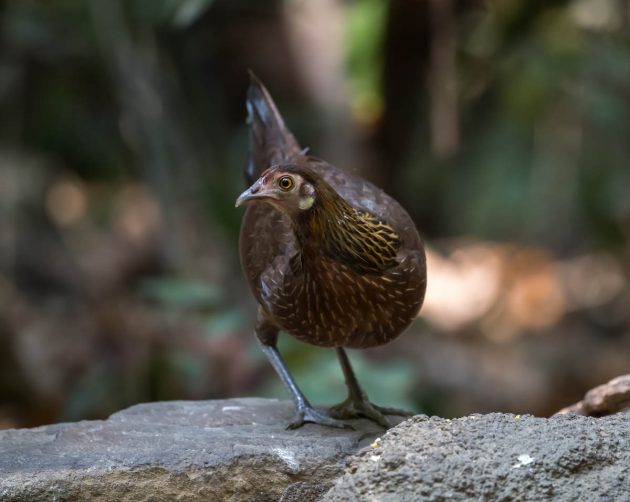
Who gets weeded out? For one thing, those birds carrying parasites – they are less attractive as mates (source).
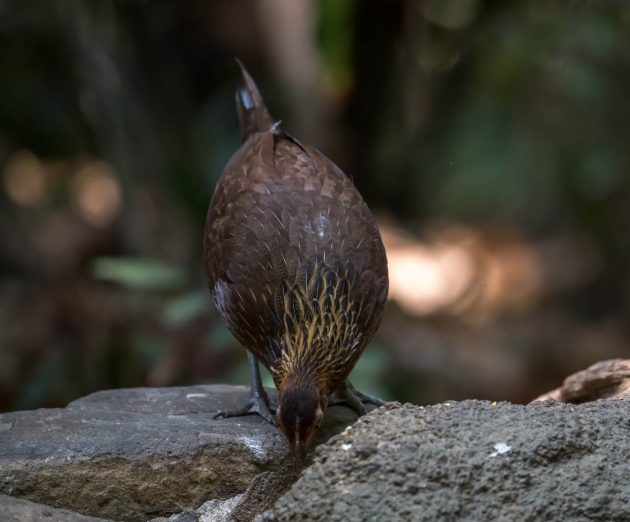
And those roosters with less red irises and smaller combs (source).
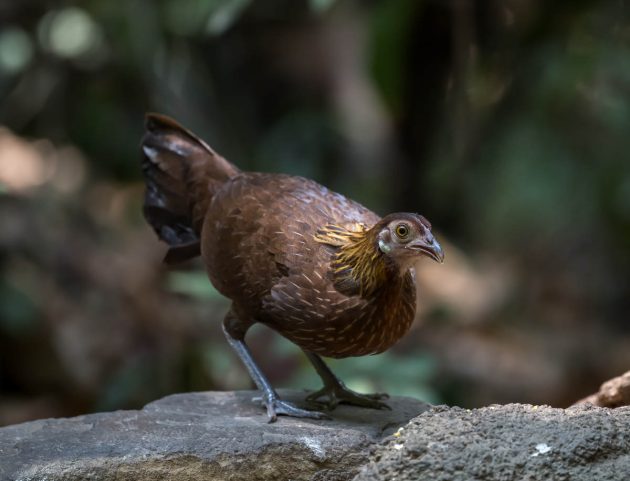
In contrast, the courtship behavior of the males did not make much of a difference (source). Given the men some women choose, it seems these results are directly transferable to humans as well.
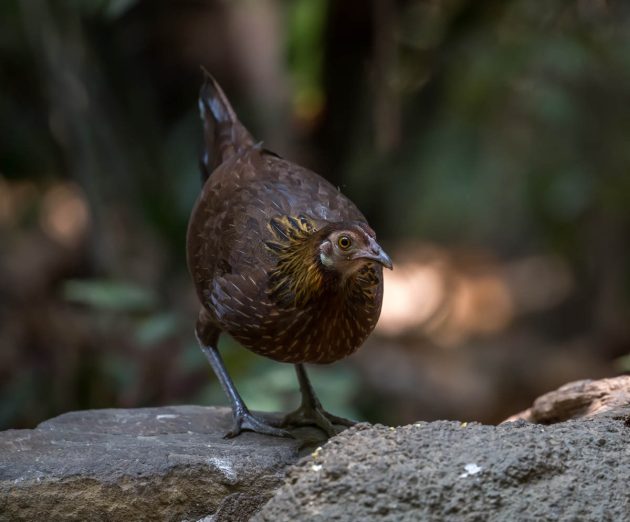
That may not be true for the results of another study looking at personality traits of Red Jungle Fowl over their life. Apparently, these traits are not very consistent, so a chick having certain personality characteristics may have quite different ones as an adult. While this is quite interesting, the scientific terms in which the authors describe their findings serve as a powerful deterrent to casual readers: “Rank-order consistencies of behavioral responses were overall low across independence and sexual maturation”.
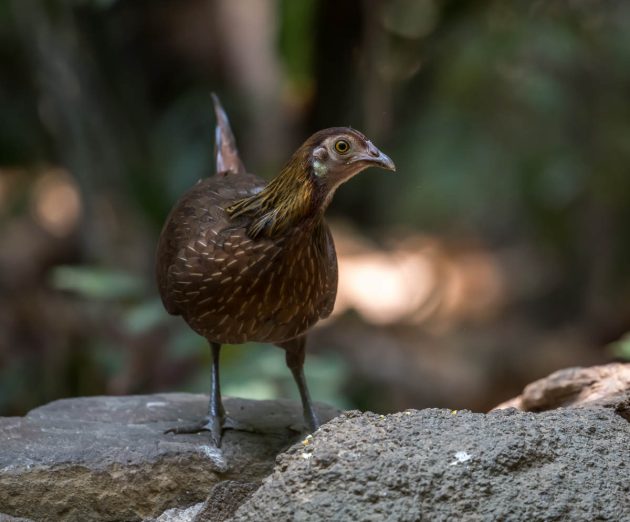
To my disappointment, eBird does not highlight how cute the White-bellied Erpornis is, only describing it as a “small, crested, yuhina-like bird”.
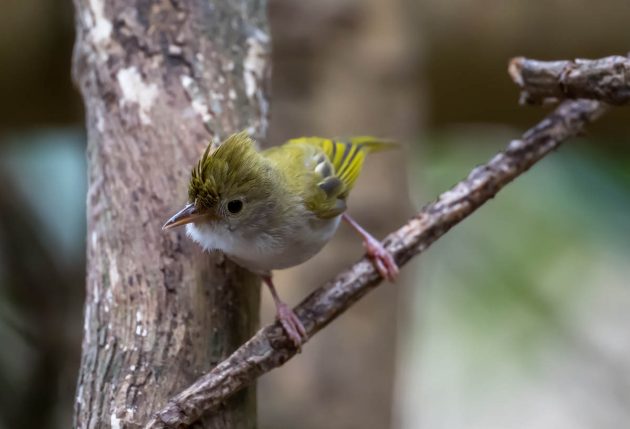
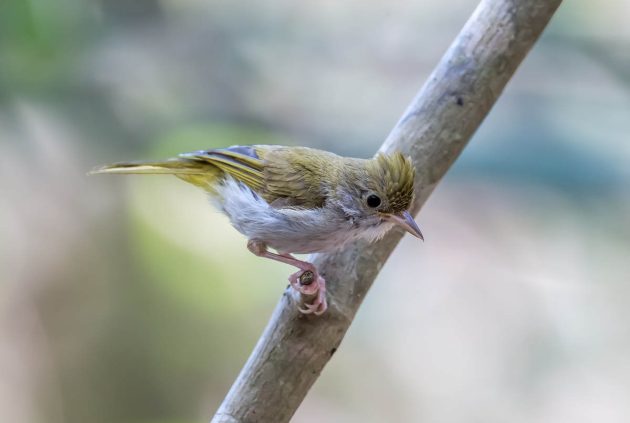
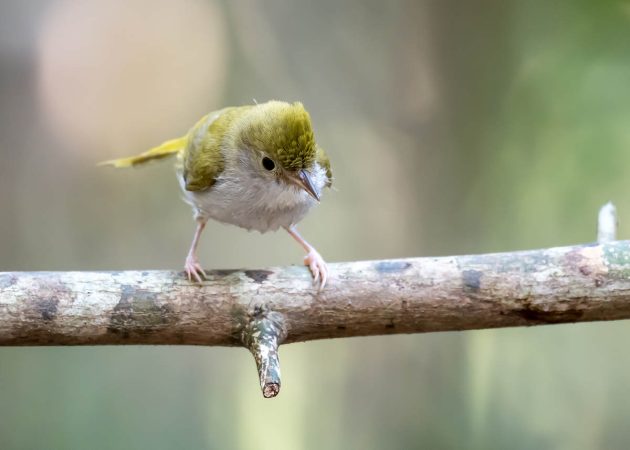
A missed opportunity.
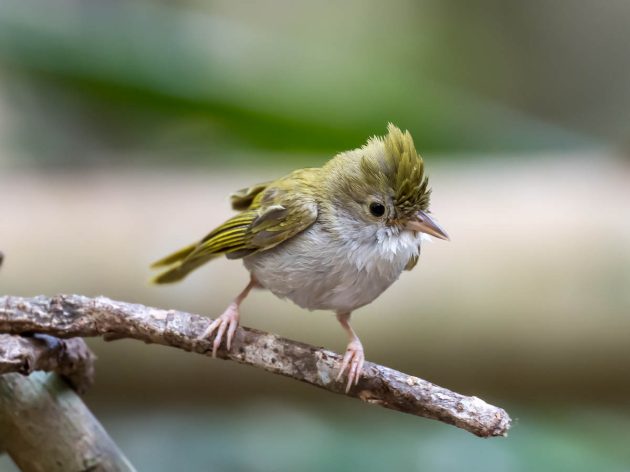
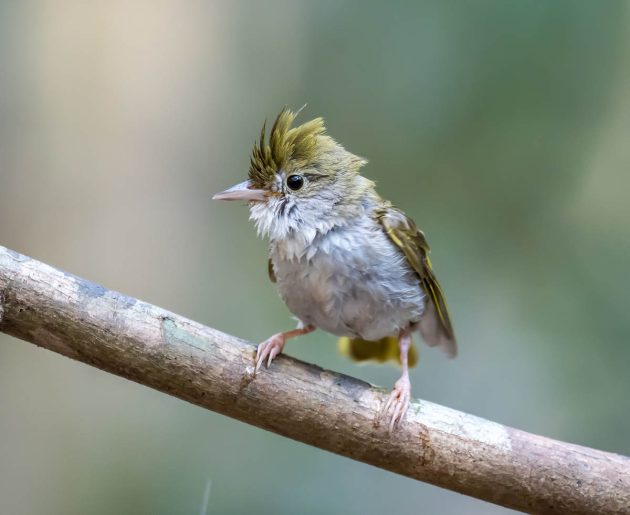
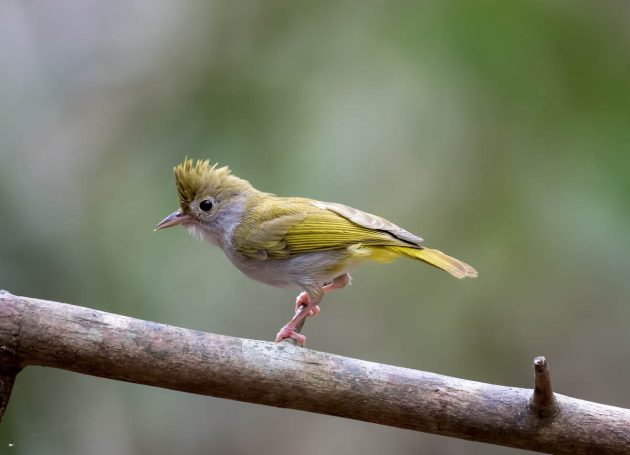
For the Indochinese Blue Flycatcher, eBird at least admits that it is an “attractive long-tailed flycatcher”
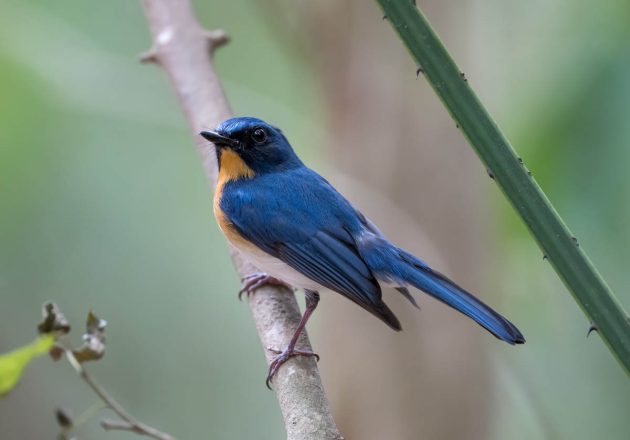
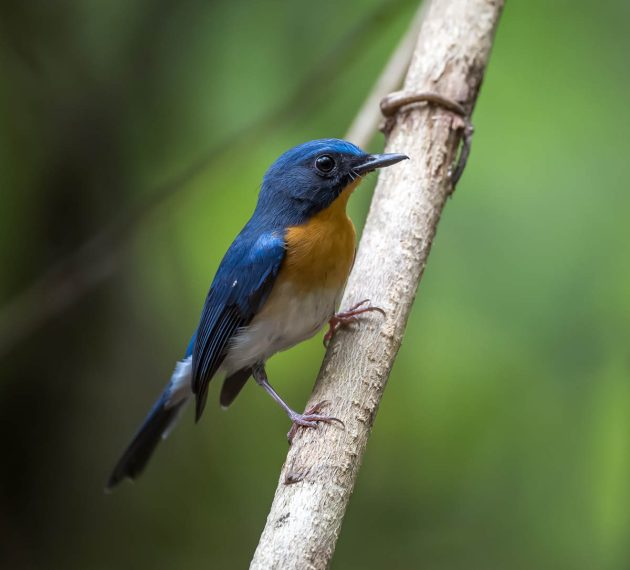
The female.
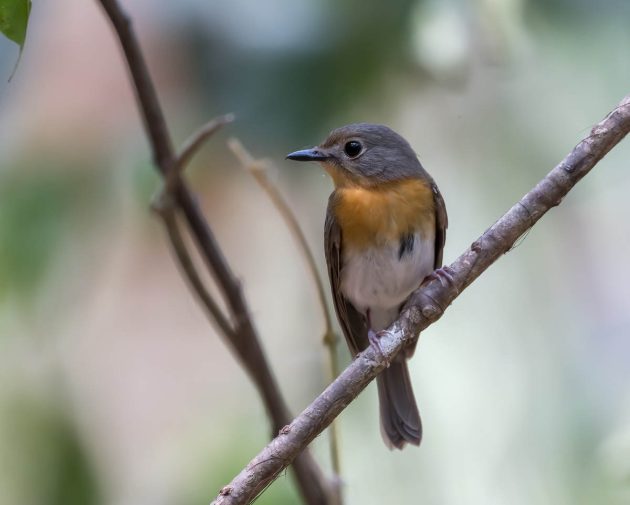
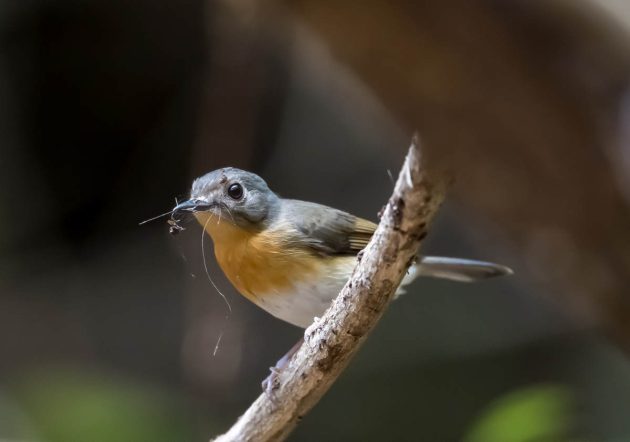
Some of the Siberian Blue Robins seen at Tan Phu looked remarkably shabby compared to the ones passing through Shanghai on migration. Maybe some pre-migration molt? Or just wearing shabby clothes when you are not on a date anyway?
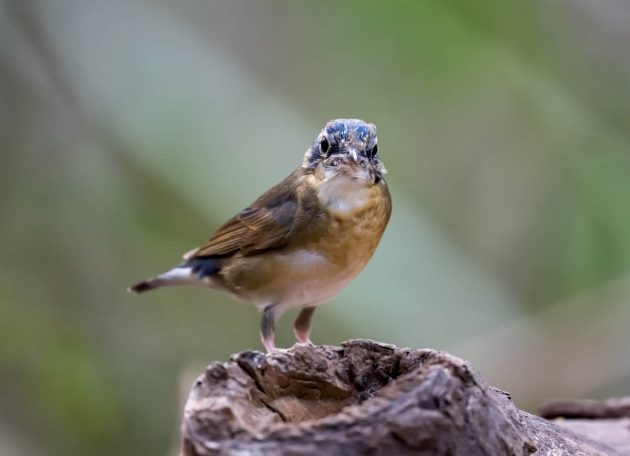
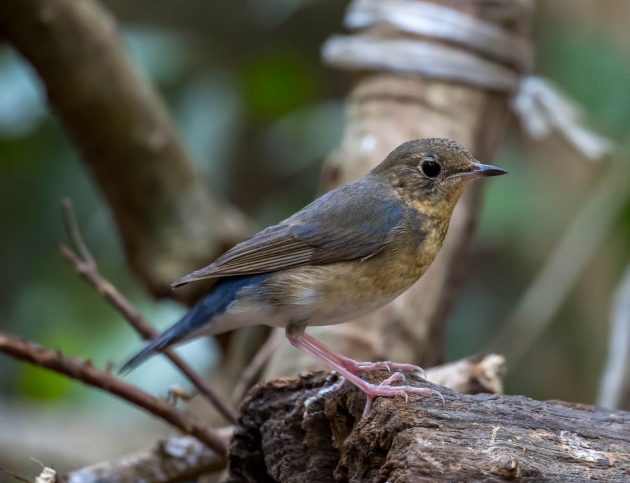
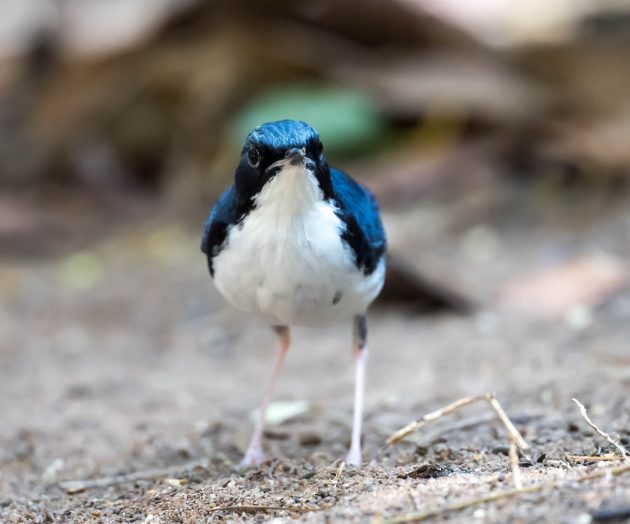
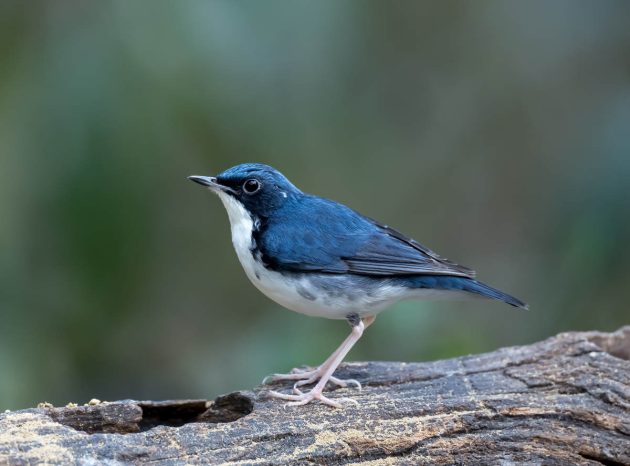
According to Wikipedia, “Bronze is a metallic brown color which resembles the metal alloy bronze”. This confirms my suspicion that whoever gave the name to the Bronzed Drongo must have been colorblind.
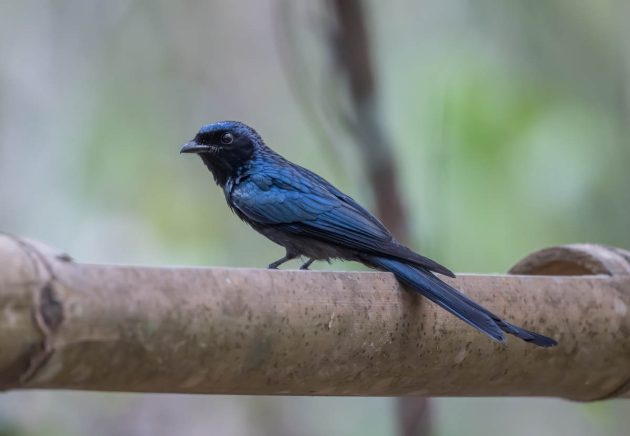
The HBW admires their nest-building capability: “observed to operate with great precision, in perfect collaboration [between the two birds]”.
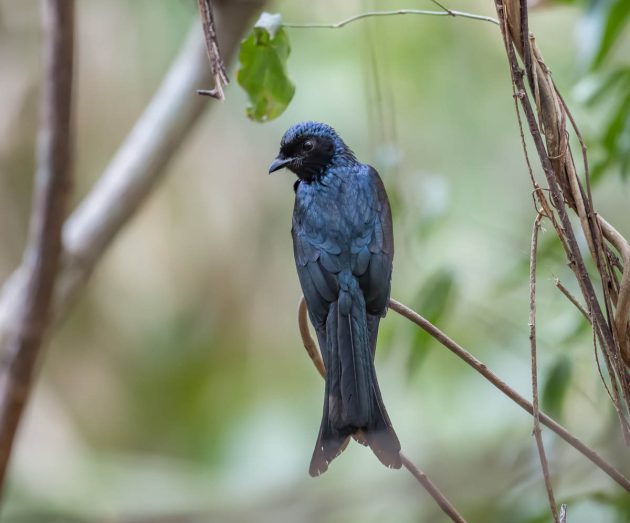
Bronzed Drongos are good mimics with a wide repertoire of species they can imitate – the HBW gives Crested Serpent-eagle, Javan Cuckoo-shrike, and Orange-bellied Leafbird as examples.
The same applies to Greater Racket-tailed Drongos. They use mimicry to confuse predators and competitors for food, to attract mates, and to frustrate ornithologists and birders, though it seems I lost the link to a paper proving the latter.
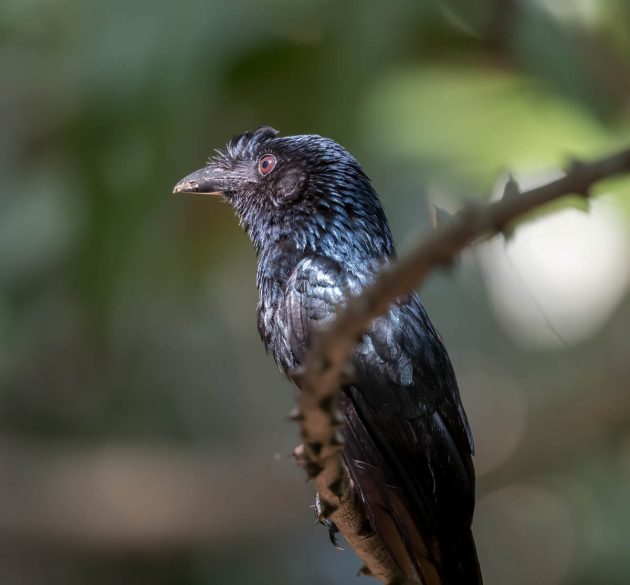
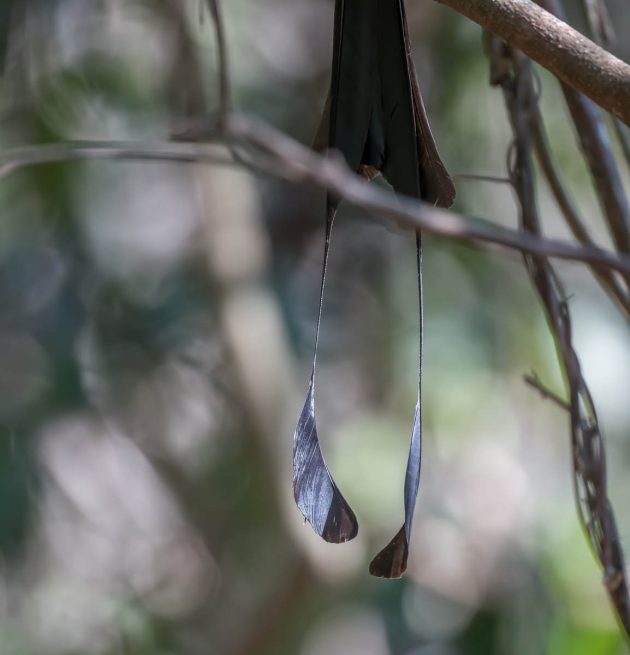
Greater Racket-tailed Drongos can mimic alarm calls of other birds that they have learned via interactions in mixed-species flocks. According to Wikipedia, this is unusual, as avian vocal mimicry was believed to be ignorant of the original context of the imitated vocalization.
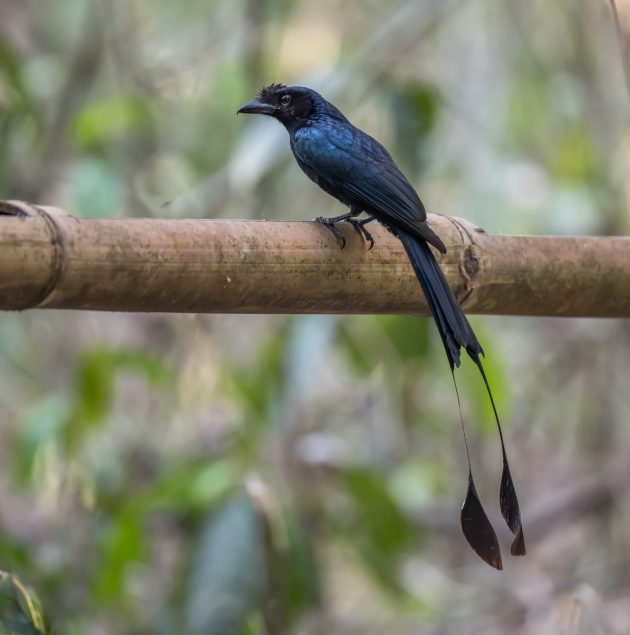
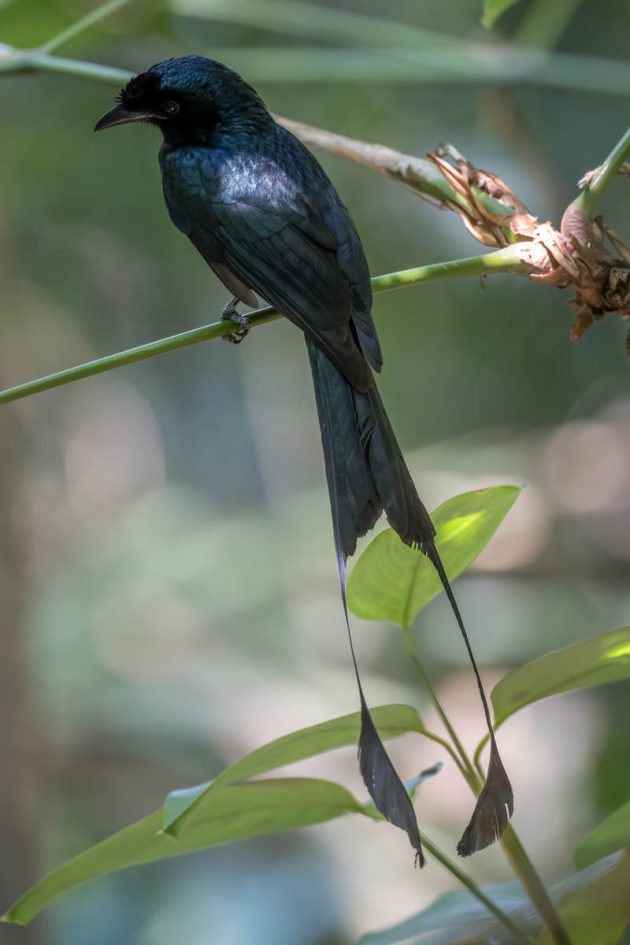
The species must have made quite an impression on the first Western observers – how else to explain the scientific name paradiseus? And no, there is no Edward Paradiseus (1812-1853), but thanks for asking.
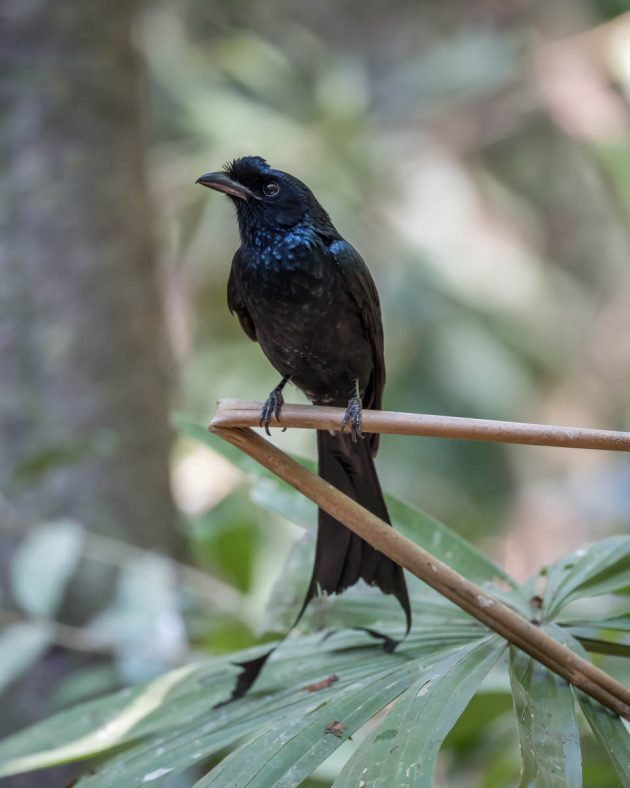
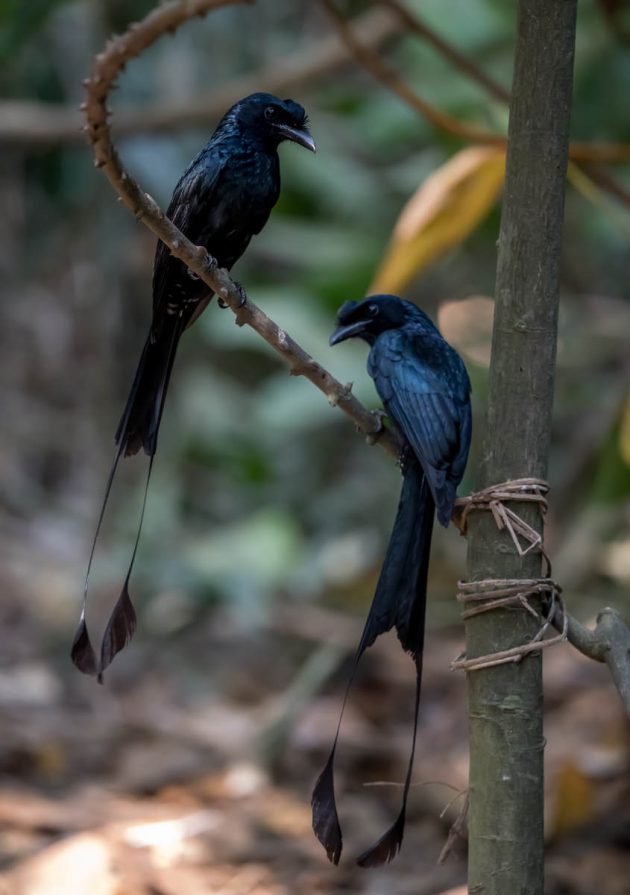
eBird calls Blyth’s Frogmouth a “cryptic, uncommon nightbird”, and it was thus a nice surprise to see it at Tan Phu.
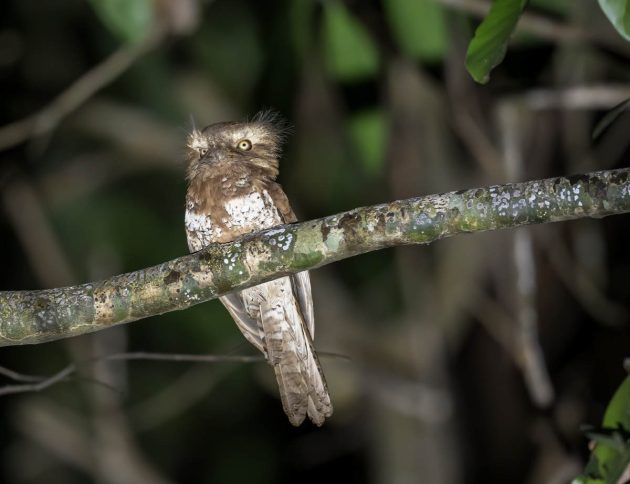
Its species name affinis is very generic and does not do its curious appearance justice – according to the HBW, over 85 forms share this word. It indicates a relationship or similarity. As I said, a rather lame name.
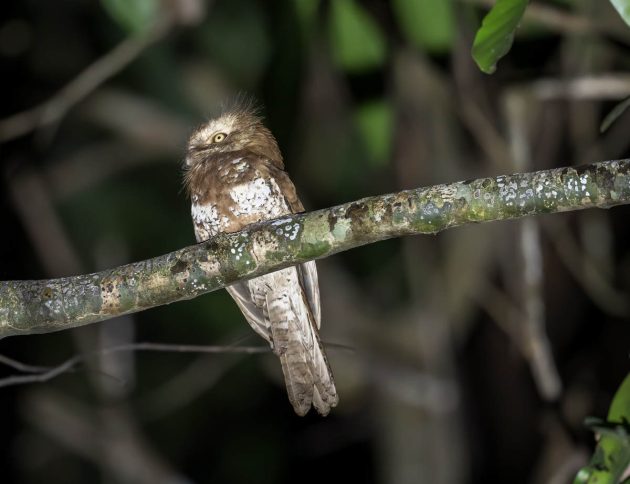
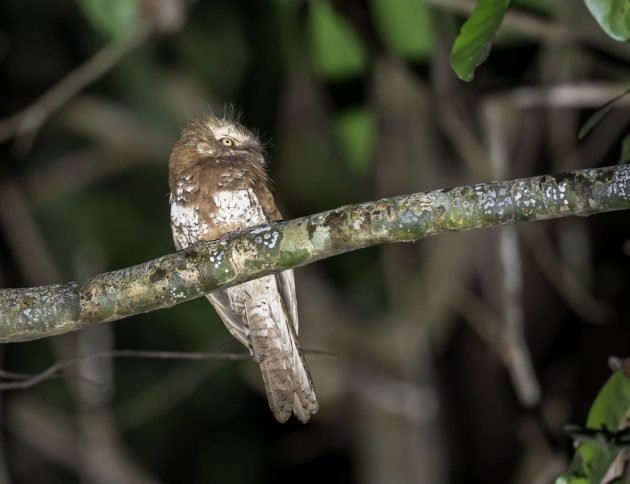
If you think these photos do not show Blyth’s Frogmouth, you might just be right – the HBW entry has the ominous sentence “Much confusion over species limits with regard to this and its close allies”.
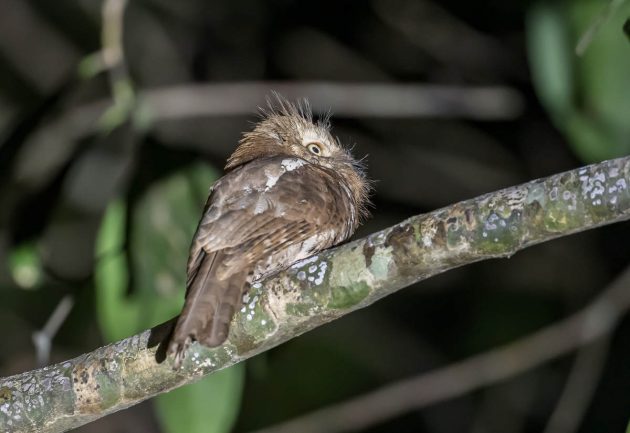
Edward Blyth, the English zoologist the frogmouth is named after, is apparently nowadays misused as an example of a creationist by dubious institutions such as the Creation Museum built by the Christian ministry Answers in Genesis. A paper nicely describes these false claims and correctly summarizes “Despite AiG’s claims of being a legitimate science organization, it does not practice science since it accepts no scientific evidence that contradicts its core tenets of a six-day creation and a young earth”.
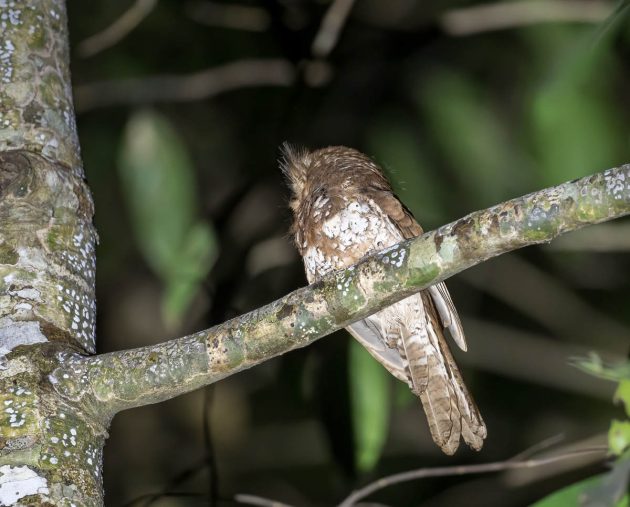
Incidentally, looking at photos of Mr. Blyth, he does indeed resemble a frogmouth a little bit. Maybe it is the beard.
For some reason, Tan Phu seems to have more or less only one leaf warbler, the Pale-legged Leaf Warbler. This makes identifying the bird easier, but it does not make the species more interesting.
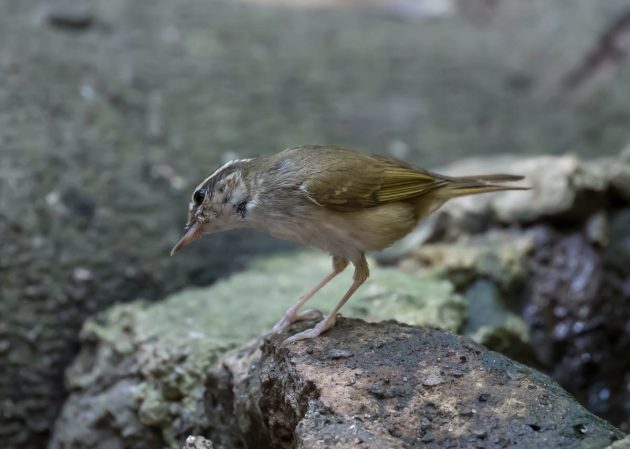
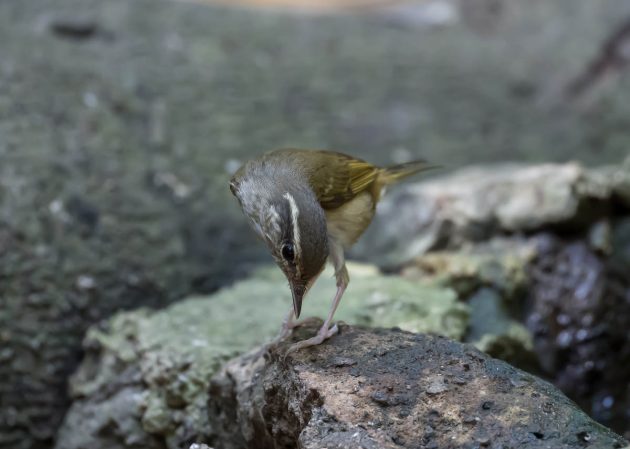
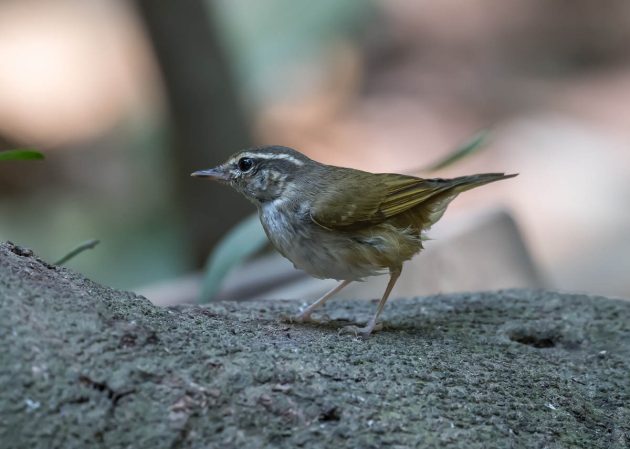
The HBW describes the mating system of the Siamese Fireback as “apparently polygamous, with dominant male largely monopolizing proximity, and therefore access to all the females in a group” – which sounds rather tiring.
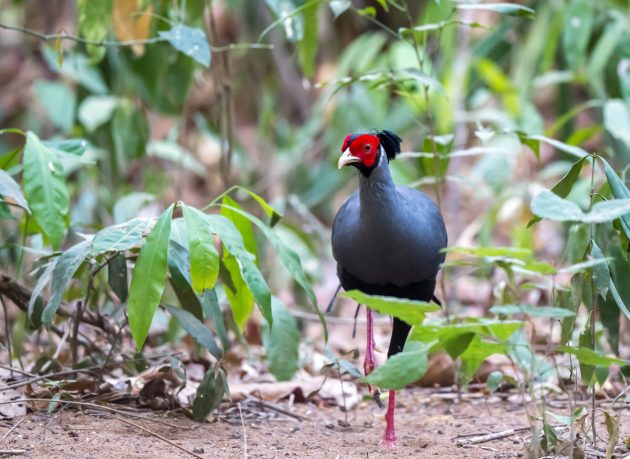
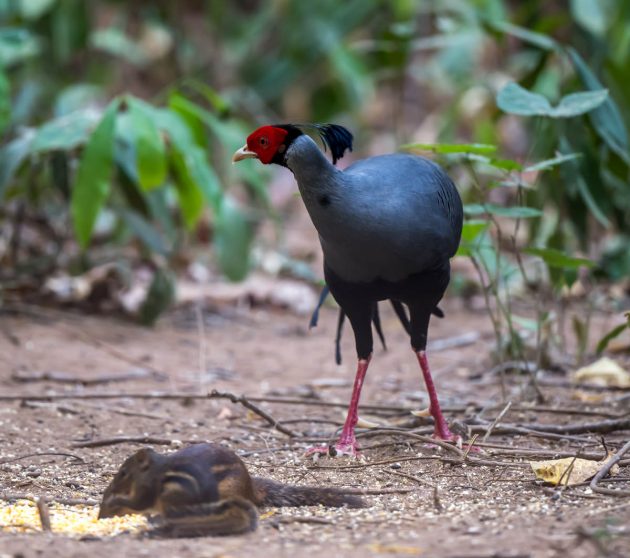
In addition, nesting mostly fails – one study states that only 8% of these attempts are successful. Predation is the major reason for the failure, despite the species’ careful selection of nesting sites preferably between the buttresses of large trees.
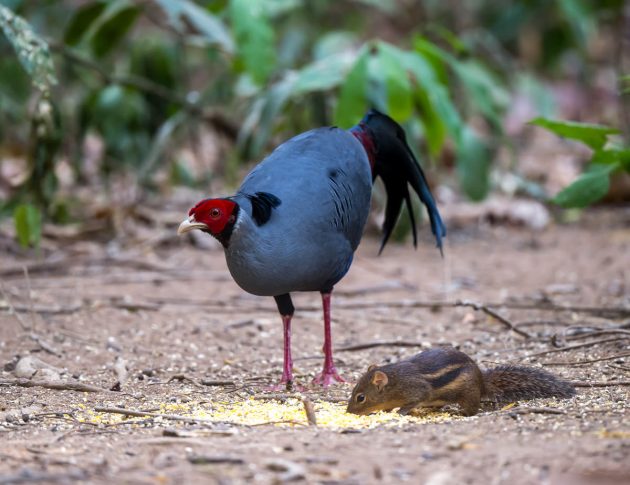
The scientific species name diardi is derived from French zoologist Pierre Médard Diard (1794-1863), who presumably also invented Diard’s Trogon.
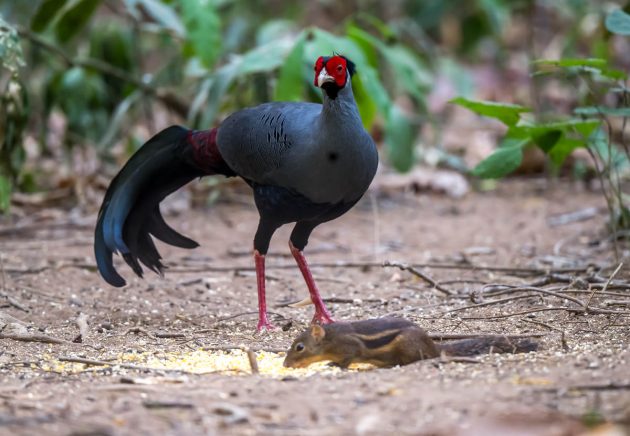
Pour Mr. Diard apparently got cheated by Stamford Raffles, if I read the Wikipedia entry correctly: “In December 1818, Thomas Stamford Raffles invited them to accompany him on his journeys and pursue their collections in places … they left with him on the basis that would equally share the collected animals. … After their arrival at Bencoulen in August 1819, Raffles requisitioned most of their collection and left them copies of their drawings, descriptions and notes.”
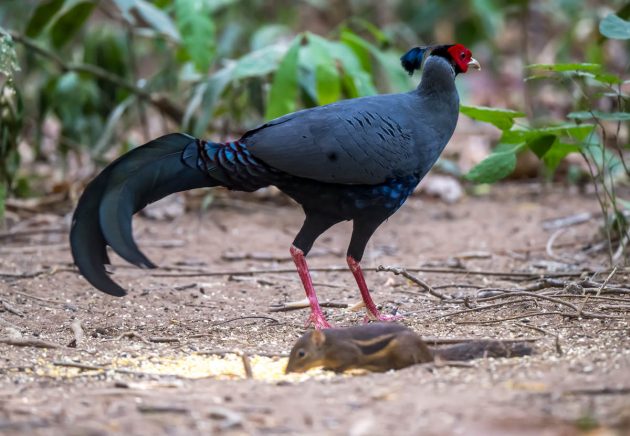
Researchers studying these birds must be grateful for camera traps – one study using such traps obtained 1.74 photos per 100 trap nights. Imagine spending 100 nights in one location and only seeing your target on two nights …
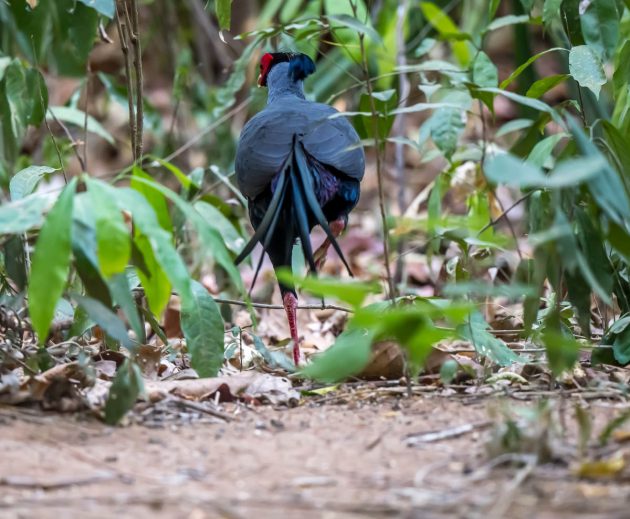
The Black-naped Monarch has a large number of subspecies – the HBW lists 23 (another paper – with some lovely photos of nesting birds – gives the number 24). Out of curiosity, I asked ChatGPT for the bird with the highest number of subspecies – ChatGPT confidently and almost certainly wrongly claims it is the Red-winged Blackbird with an estimated 20 to 24 subspecies.
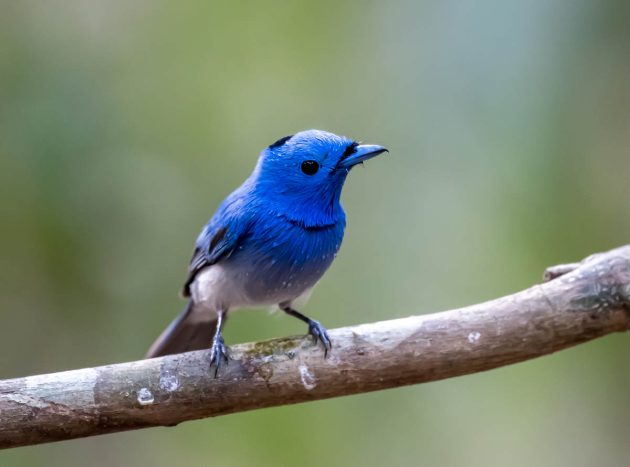
Given the situation of women in Iran, it was probably a bad idea for a female Black-naped Monarch to show up in the country, as described here.
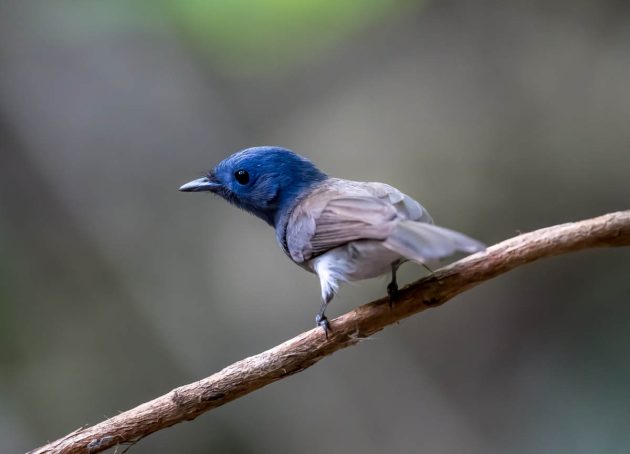
If you are more into virology than ornithology, you might be better off following a different blog – or you could check out this paper: “Detection of a novel astrovirus from a black-naped monarch (Hypothymis azurea) in Cambodia”.
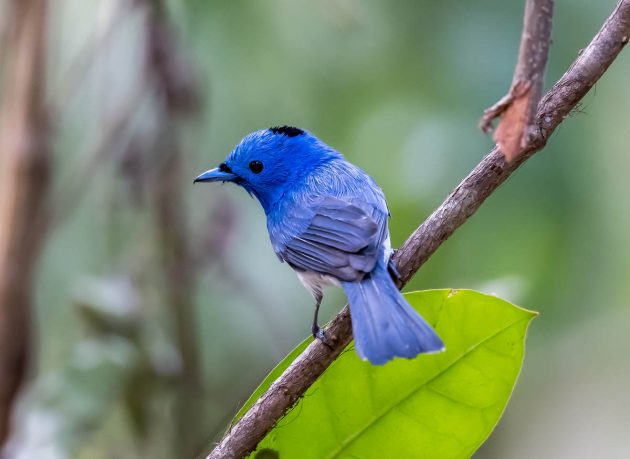
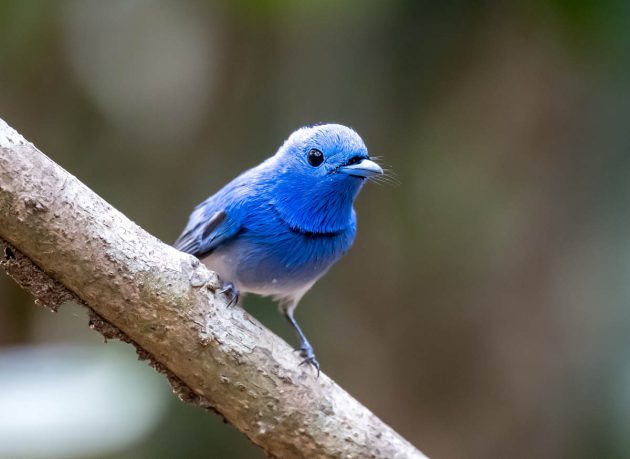
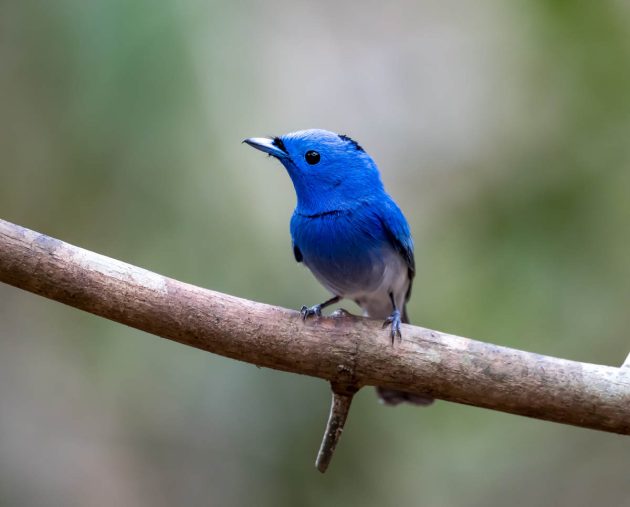








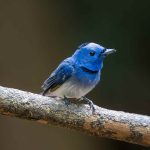




Your bulbuls always seem to be quite conspicuous whereas in Africa the related greenbuls are unbelievably hard to spot. The monarch is amazing, what a bird.
Indeed, in Shanghai and many places in South East Asia, bulbuls are often the most conspicuous of species. Just got back from Sulawesi, there, the Sooty-headed is the default bird once you start looking around …